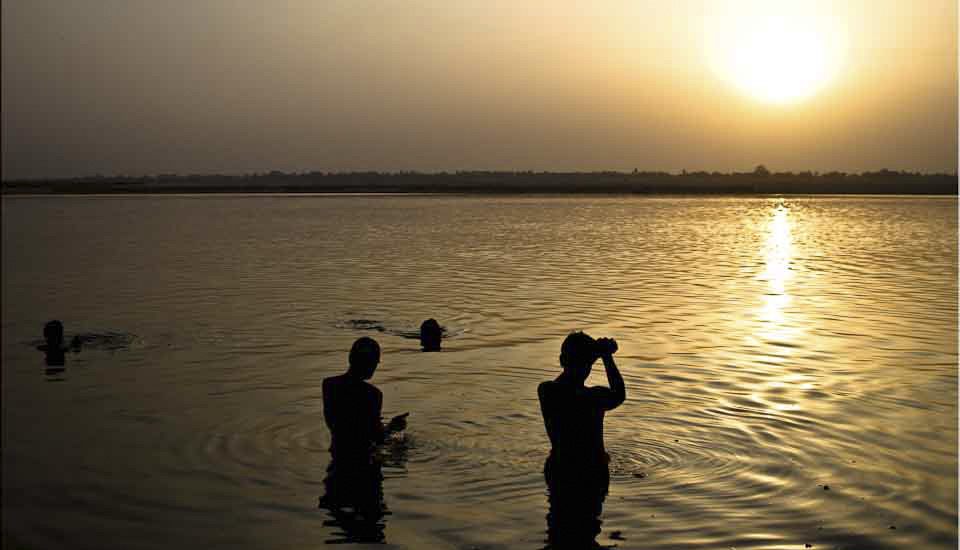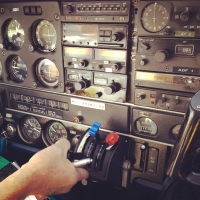.jpg)
Monkey Guardian
Everywhere you go in Bali, spiritually-infused art is a part of the natural landscape, and nature in turn takes over the art.
It is so easy to fall in love with Bali.
Last year, my husband and I visited for a second time: we were only in the country for just over 2 weeks – based in four separate locations – but even allowing for plenty of down-time, we felt like we did and saw so much!
This little Indonesian tropical-island paradise is quite distinctive: rich with its own unique Balinese Hindu culture; friendly and accessible to visitors; with plenty of fresh, tasty, reasonably-priced food; and with fascinating things to do and see in every corner. I’ve written before about the lush rice terraces with their UNESCO-listed system of water-management (see: A Ride through the Rice Fields and The Many Greens of the Rice Fields); I’ve posted about the food (see: Gado-Gado and Satay) and the religion (see: Chasing Sunset; Pura Ulun Danu Beratan; A Hindu Temple Procession; and Temple Trails); and shared pictures from a traditional dance performance (see: Legong and Other Dances).
There are rich delights at every turn.
The Ubud area, in the “uplands” of Bali, is the cultural heartland – and it is also where we had most of our “animal” experiences: elephants, monkeys, civets, and of course, the mythical, demonic creatures that live in the very stones …
Hanging Crab-Claw Flower – Heliconia Rostrata
There is something about the tropics: the hot, moist climate makes for sumptuous displays of colour wherever you look.
.jpg)
Ganesh
Images of the Lord Ganesha, the remover of obstacles, the patron of arts and sciences and the deity of intellect and wisdom, are ubiquitous. This one takes centre stage at the Jalan Elephant Safari Park gift shop, Tegallalang Ubud.

Elephant Riders in the Sanctuary
With the ongoing controversy surrounding captive elephants, we hadn’t elected to go to the park; …

Elephant Riders in the Sanctuary
… it was an included part (lunch stop) of a cycling tour we had taken through the rice terraces (see: A Ride through the Rice Fields).

Mahout and his Elephant
The elephants in the eco-resort/sanctuary were reputedly rescued from the Sumatran logging trade and seem well looked after.

Elephant Food

Hungry Elephant
They are certainly keen for the food visitors buy to give them.

Ganesh and Flowers
Another Ganesha – this time in the gardens of our accommodation on the outskirts of Ubud. (iPhone6)

Keeper Checking a Macaque
The Sacred Monkey Forest Sanctuary is a must-visit in Ubud. We arrived late in the afternoon, and it was already growing dark under the canopy of trees.

Park Attendant
We paid the small fee, took our booklets, smiled at the ticket collector and made our way in.

Monkey Guardian
Two Bedogol or Dvarapala – gate guardians – are present at the entrance to all temples and most homes or villages in Bali; this monkey-statue reminded me of those guardians, but there was only one as we walked into the sacred forest.

Balinese Long-Tailed Macaque – Macaca Fascicularis
I’m a lot more wary around monkeys since being bitten by a macaque in Thailand (long story!), so I kept a reasonable distance and avoided eye contact.

Macaques and Sweet Potatoes
Most of the animals were more interested in the food they were surrounded by than they were in us, but there are all kinds of warning instructions for visitors.

Macaque on the Pavers

Macaque on the Pathway
The little ones seem so sweet, …

Toothy Macaque
… but when they squabble with each other, those mighty canines look quite fearsome.

Mother and Son

Roasting Coffee
As a brief sojourn on another day trip, we stopped in at one of the many eco-coffee “plantations”, where visitors get to see labelled coffee-, tea-, cocoa-, and spice-plants; to watch coffee beans be hand-roasted; and (best of all!) to taste-test all the products.

Asian Palm Civet – Paradoxurus Hermaphroditus
Bali prides itself on “Luwak (civet) Coffee” – what the Vietnamese call “Weasel Coffee”. The coffee is made only from beans the civet has eaten and passed through it’s digestive tract, producing a less-acidic brew. Luwak coffee is much more expensive than the regular blends; I went home with a beautifully spiced hot-chocolate mixture instead.

Fountain Figures : Goa Gajah
Balinese water temples are decorated with beautiful sculptures, and the figures in the bathing fountains at Goa Gajah, or Elephant Cave, are a fine example. Thought to have been built in the 9th century, the fountains were only rediscovered in the 1950s.

Inside the Temple Complex
Behind the bathing ponds are the usual pavilions and shrines …

The Mouth of the Demon
… and a very unusual cave complex. Although it is called Elephant Cave, there were never elephants here; it may be named for the nearby river, or for the Ganesha in one of the caverns.

The Elephant-Headed God Ganesha
One of the caverns houses the remains of lingam, phallic symbols of the god Shiva, and yoni, the female compliments. Another houses a statue of Ganesha, Shiva’s son. Offerings of flowers and incense are everywhere.
I do love Bali.
There is always something new to discover, or something familiar to re-explore. I hope to get back there one day. In the mean time, I still have more pictures and memories from the last trip.

Until next time,
Happy Travels!
Pictures: 24January-03February2017


























.png)

